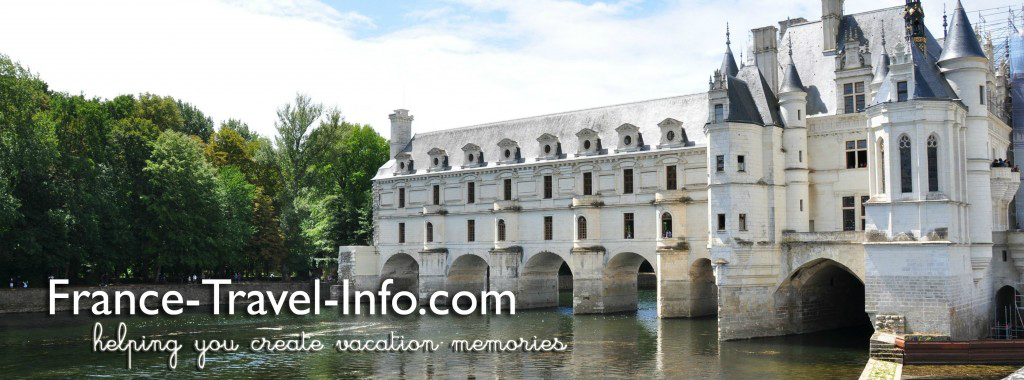Château d’Ussé is a Fairy Tale Castle
The best views of the Château, as you see below, from the bridge which crosses the Indre.

Château d’Ussé bridge view

View of the Château as we walked up the path.

Château courtyard view and bridge as seen from the top of the Château
The Château was originally built with an enclosed courtyard but in the 17th century the wing over the River Indre was demolished and now the courtyard opens out to the river. The views of the countryside are spectacular!
It looks like a fairy-tale castle, doesn’t it? If it looks to you like you might have seen it before you may be right as Charles Perrault used the Château d’Ussé as his inspiration for the castle in Sleeping Beauty. When you reach the end of your tour at the top of the Château you will find a delightful display which depicts this fairy tale.
The Château has beautiful gardens which are supposed to have been designed by the same landscaper who designed the gardens at Versaille.

Inside the Château
Inside the Château in the drawing room you find a David and Goliath tapestry and an ebony Florentine cabinet with 49 drawers. These Florentine cabinets seem to be in many châteaux as well as many of the historic manor houses we have visited in England.

David and Goliath tapestry
In the guardroom is a Trompe l’oeil ceiling from the 17th century. It imitates marble. In this same room are Aubusson tapestries from the 17th century as well as other tapestries and Majolica vases.

But it is at the top of the Château d’Ussé that you return to the childhood fairy tale of Sleeping Beauty. Follow the story from room to room. These displays clearly delighted all of the visitors regardless of age! The rooms with Maleficent were impossible for me to capture on film because of the strobes and flashing colored lights but it was very impressive! It even audibly enchanted the adults.

Princess Aurora and the spinning wheel

Sleeping Beauty and Prince Philip
Transition Gothic/Renaissance Chapel
Upon leaving the Château we followed the path to the Gothic/Renaissance Chapel, known as the Collegiate Church. This Chapel has the letters C and L everywhere you look. Constructed in the 1520s, the Church bears the initials of Charles d’Espinay and his wife Lucrèce de Pons. They bought the Château in 1485.
The “basket handle” door arch has some particularly fascinating carvings. There are 17 medallions. Twelve of these are of the apostles. One is of Christ (center top) and the other 4 are motifs of death. In the center of the arch is a giant shell motif. God is sitting on His throne at the very top of the arch.

The Chapel door symbols in this section are: death symbol, Matthew, Simon and Bartholomew.
I think my favorite part of the Chapel was the Florentine enameled virgin from the 15th century.

Midway between Villandry and Montsoreau, Château d’Ussé was the perfect way to spend the afternoon!
Opening Times on their site.



Leave a Reply